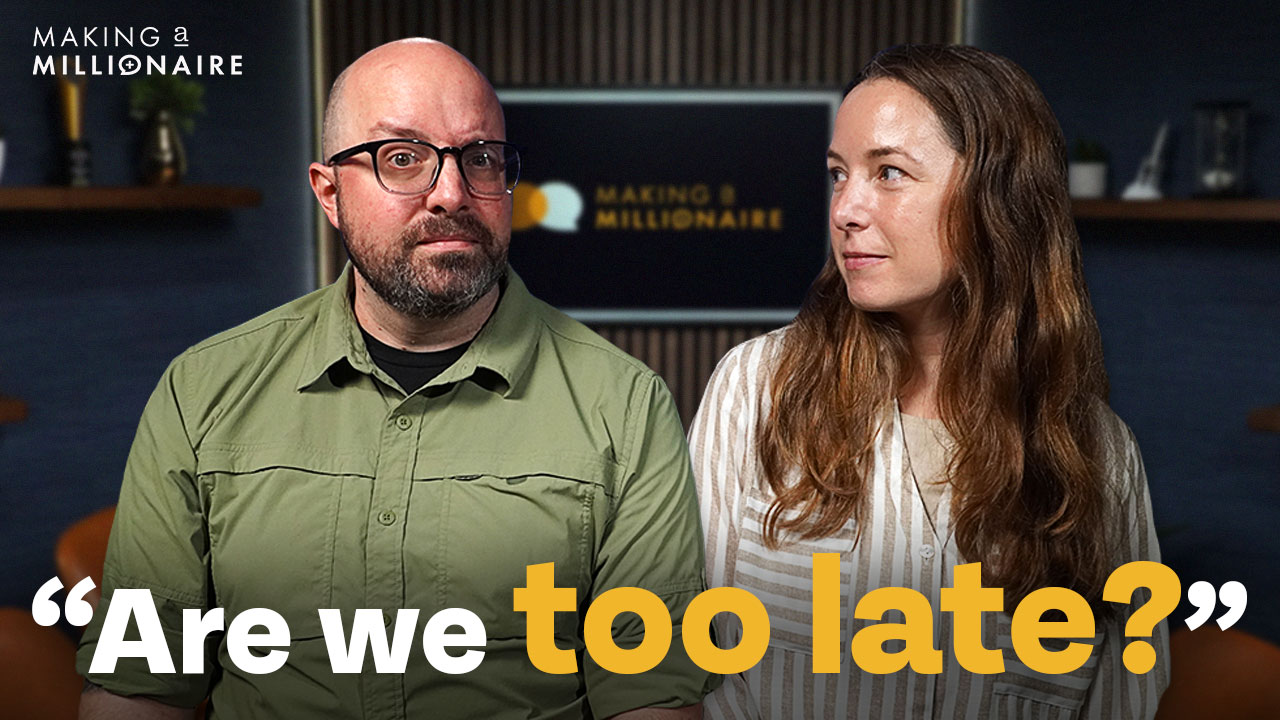Zachary has a question for you guys. He says, “My Fidelity advisor is pushing me to start using a Roth 401(k). I’m currently in the 32% bracket. I don’t have a tax-free bucket, but I really don’t want to spend another $14,400 on tax annually. What should I do?”
“Well, I mean, here’s our opinion. Like, we love Roth. We love tax-free dollars. I mean, we really love tax-free dollars because the overlying reason we love tax-free dollars is we really dislike paying taxes. That’s a thing that we’re not super excited about. So, if we have opportunities to decrease our tax load, we’re going to pursue said opportunities. Well, Zachary, that’s where you have a bit of a quandary. It sounds like your Fidelity advisor is saying, ‘Hey, you should do Roth. You should build tax-free dollars, and that’s going to save you tax dollars in the future,’ which is certainly valuable. However, if you look at your marginal federal bracket and your marginal state bracket and it’s at 32%, every dollar that you choose to put into the 401(k) on the pre-tax side is going to save you 32 cents in taxes. You can kind of think of that as sort of like a 32% imputed rate of return.”
“Well, our view is when you look at historical tax rates, once that combination of rates gets above 30%, it’s really, really difficult to walk away from that 30% plus tax savings. That’s a really enticing offer for current year tax savings. Now, if you’re below 25% and you kind of look at where the progressive tax brackets break, then there’s a really good chance you can justify doing Roth. If you’re below 25%, then between 25 to 30, it gets a little more interesting. So, in your situation, when I think about, okay, I can put a dollar in pre-tax, I can save myself 32 cents in taxes. Well, then if I take that 32 cents in taxes and I go put that either directly in a Roth IRA or, because of your income, you can’t do that, I go think about doing a backdoor Roth, maybe it’s not an either-or. Maybe I can build tax-deferred and tax-free dollars without having to choose one over the other.”
Yeah, I’ve run into, Zachary, you have a few, you didn’t share with us, this is going to be one of those things. You’ve got a great situation ’cause I just pulled up on my tax chart, income is great for you to be in the 32%, but if you add your state income tax, assuming you live in a state that has an income tax, like think about California, his level of income that could be a 10 to 13% state income tax. So now we’re talking about 42 to 45% taxes. I had a conversation, I had a neighbor who was using, um, I’m not going to get into brands, you said the branding in your question, but they were working with this big corporate advisor too. And I was like, you know, one of the things you ought to consider is doing a backdoor Roth strategy. But it would mean that you need to roll your IRA that’s actually being managed by this big corporate advisor into your 401(k). You’re the one into the 401(k), so you could do the Roth conversions. And the person didn’t want to do that because I think that would have blown up their structure and how they did it. Now, this sounds like your advisor is telling you to do the Roth 401(k). So, I know that there’s a 401(k) involved with this, but you’ve got to know your tax rate. You also got to know when you’re going to retire because that’s usually step seven of the financial order of operations where we talk about the three-bucket strategy and the hyperaccumulation. It’s because you’ve got to, a good financial plan is not only going to be about how much you’re saving, but it’s also what will your distribution plan or what are your goals going to be like because if you’re retiring early, you’re going to need to have the after-tax pot built up as well. And then if you retire also well before 75, which is when the government’s going to make you do required minimum distributions, then you might have a lot of opportunity to do Roth conversions at a much lower tax rate than the 32 to 45% that you might be paying in combined marginal rates. So, all that has to be taken into account. Your tax plan has to be synced up with your retirement plan as well as your future cash flow as well as what your goals are. That’s why, once again, I love being a financial advisor. This is the jigsaw puzzle that is every client that comes to us, and I love it. I mean, it lets us get into the dirt of figuring out how we can move things around to maximize every situation that comes. So, just talk to your, you know, play the Socratic method with your advisor, Zachary, and start asking them questions. You know, what about Roth conversions before I start taking RMDs? What about doing backdoor Roth IRAs? If you’re getting some question, if it looks like they’re just running you through a cookie-cutter process and not actually pulling the jigsaw pieces around to maximize your situation, then that might tell you something. But if they actually can answer every one of those questions and make it feel like, ‘Hey, this person really is trying to maximize my opportunity,’ then you need to analyze that too. This question, even though it was a Roth 401(k) question, it might turn out to be just a better, ‘How do you find a great financial advisor to make sure they’re on the right path?’ And I would encourage you to go to moneyguy.com/resources, look at the eight questions you ought to ask your financial advisor, in conjunction with the questions you’re going to load them up with to make sure you’re getting everything in the best possible version for yourself. For more information, check out our free resources.














